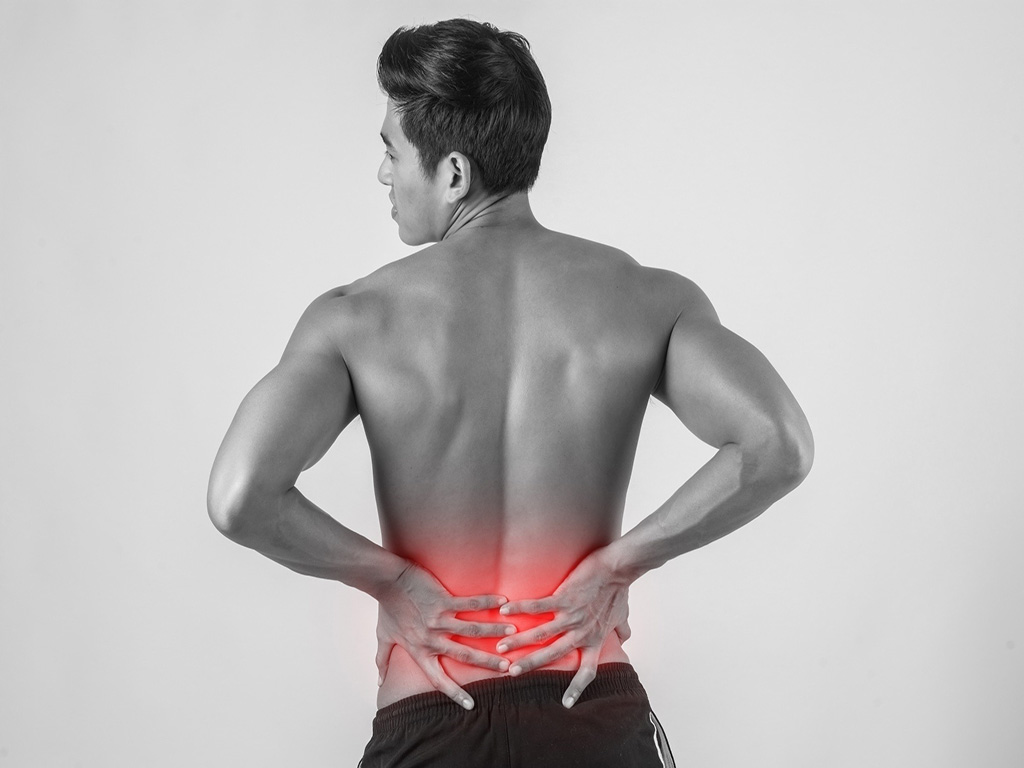Lower back pain is a prevalent form of discomfort experienced by individuals worldwide, affecting approximately 80% of people at some point in their lives. It can manifest as sudden, debilitating pain, dull aches, stiffness, or burning sensations that radiate down the buttocks and legs. Whether acute (short-term) or chronic (long-term), lower back pain can significantly impact daily life by limiting movement and mobility, disrupting sleep patterns, and decreasing overall mood.
While it may be tempting to ignore lower back pain, doing so can impede recovery and worsen symptoms. Seeking medical attention for lower back pain is the most effective way to prevent complications and live with minimal discomfort. In this article, we have compiled seven causes of lower back pain that are important to understand.
1. Herniated disc
The thoracic and lumbar spines in adults consist of approximately 17 vertebrae stacked on top of each other. Between each set of vertebrae lies a cushiony disc that helps absorb impact on these bones. Each disc has an outer layer and an inner gel.
Herniated discs occur when the inner gel of a spinal disc slips or protrudes beyond the outer layer, putting pressure on nearby nerves and causing pain. This displacement can be caused by trauma or age-related wear and tear.
2. Degenerative disc disease
As people age, spinal discs can lose moisture and wear out over time. Without proper hydration, the disc’s ability to withstand stress decreases, leading to weakening and tearing of the outer layer. As the disc degenerates and loses function, it can contribute to other spinal conditions such as spondylolisthesis, facet joint osteoarthritis, spinal stenosis, vertebrogenic pain, or herniated discs.
3. Spinal arthritis
Lower back pain is often caused by arthritis - a gradual breakdown of the spinal joints. As we age, wear and tear are inevitable, and it is common for lower back pain to develop as we get older. As cartilage between these joints wears down over time, surrounding tissues may become inflamed. This inflammation coupled with loss of cartilage increases friction in the joints and can result in lower back pain.
4. Muscle or ligament injuries
Muscle strains or ligament sprains are among the top causes of lower back pain. Lifting heavy objects, sudden movements, accidents (such as falls), and overuse can cause tears or stretching of muscle fibers, resulting in strain. Ligament sprains occur when fibrous tissues that connect and hold bones together are torn – often caused by rapid movements, twisting, or accidents.
Common symptoms of muscle strains or ligament sprains include muscle spasms, swelling, and pain radiating into the buttocks. Pain may also cause stiffness and difficulty maintaining proper posture or range of motion.
5. Compression fracture
A spinal compression fracture occurs when one of the vertebrae in the lumbar spine collapses on itself. This condition is most commonly associated with osteoporosis, but it can also be caused by trauma. This collapse can result in severe pain, with individuals reporting limited mobility and intense discomfort.
6. Structural issues
Spinal stenosis occurs when the spinal column is too narrow for the spinal cord to pass through comfortably. Anything that compresses the spinal cord (such as bone spurs) can cause intense pain along the sciatic nerve and lower back discomfort. Lumbar scoliosis may also contribute to stiffness, difficulty moving, and discomfort. Another structural issue that can lead to lower back pain is spondylolisthesis - a condition where a vertebra slips out of place onto another bone below it.
Note: The information provided above is not intended to replace medical advice from a qualified healthcare professional. If you are experiencing severe or persistent lower back pain, please consult your doctor for proper diagnosis and treatment options.
